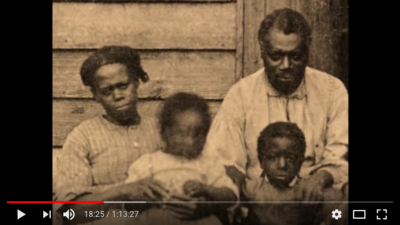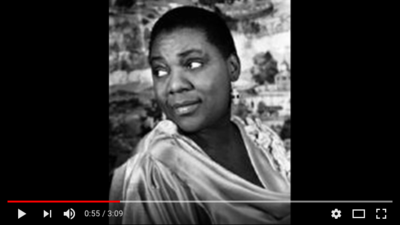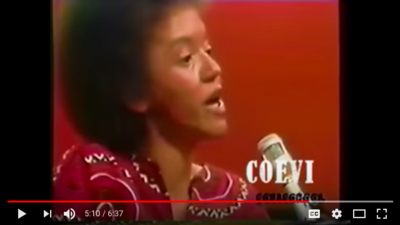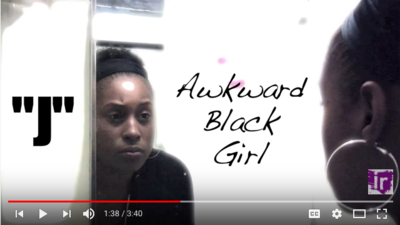A History of Black Women's Agency in Romantic Relationships with Men
This project provides a look at Black women’s individual autonomy in their romantic relationships with men in four eras from the late 19th century to the present, through the analysis of one pop culture artifact from each era, along with scholarly texts. Over the course of the past century and a half, pop culture has portrayed certain tropes of Black womanhood that have been present for centuries, at least since the time of 16th-century travelogues by European men visiting Africa. Since then, blues, Black Arts, and current media have simultaneously been sites of perpetuation of these stereotypes, as well as sites of resistance and defiance of dominant stereotypes of Black womanhood.
Here I focus especially on the agency and autonomy of Black women in making decisions about their romantic lives with men, and in narrating their own stories through media. To best understand the progression of my argument, start by clicking the “Slavery” section below, and follow through to the end by clicking the “Next” button at the bottom of each page.
This site was created in December 2016, as a culminating project for my Black Womanhood in Popular Culture class with Professor J Finley of Middlebury College. Thank you for everything, Professor Finley!
| Artifact Snapshot | Summary of Analysis |
|---|---|

|
Slavery (late 1800s):The artifact is an HBO documentary that includes readings of interviews with the final generation of African Americans born into slavery in the US. During the period of slavery in the US, Black women had little to no agency in their romantic lives; even if a woman was allowed to choose a partner, she (or her partner) could be sold at any time. Furthermore, white male masters often committed sexual violence and non-consensual sexual acts against enslaved Black women. |

|
Blues (early 1900s):The artifact is Bessie Smith's blues song "Thinking Blues." Scholars have mixed opinions on the utility of blues as a form for Black women to express themselves and their sexuality. In some ways, blues music provides a platform to express themselves, but to the extent that men are the ones writing lyrics for these women, sometimes blues has caused women to be complicit in perpetuating images of themselves as hyper-sexualized. |

|
Black Arts (1960s and 70s):The artifact is Nikki Giovanni reading an excerpt from her book Gemini (1976). Giovanni is part of the Black Arts Movement, an arm of the Black Arts Movement. This excerpt demonstrates a complex understanding of Black women's relationship to Black men in the US. On the one hand, Giovanni sees Black men as being controlled by the Black women in their lives; on the other, Giovanni herself resists being held back, controlled, or defined by a romantic partner. |

|
Current Media (early 2010s):The artifact is "The Stop Sign": Season 1, Episode 1 of The Mis-Adventures of Awkward Black Girl (2011). This show is created by Issa Rae, who also is the star and protagonist of the show. Issa Rae plays J, who is not opposed to being in relationships, but she is not defined by her relationships, and she unapologetically makes her own decisions about her story and her identity. |